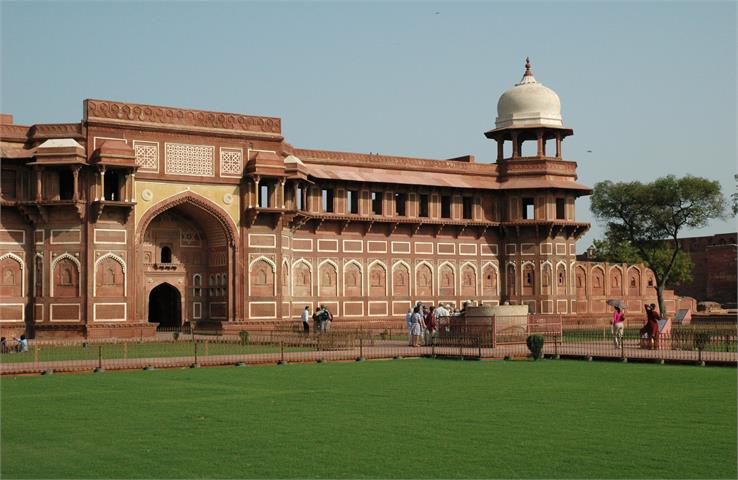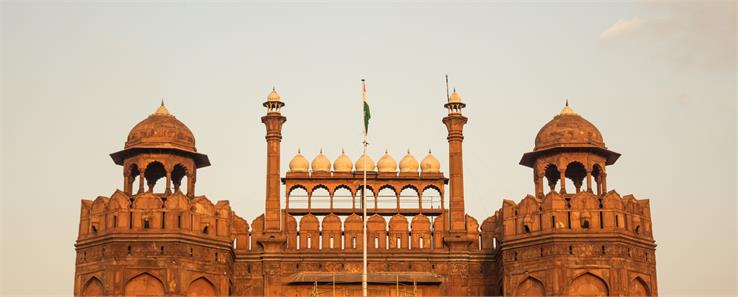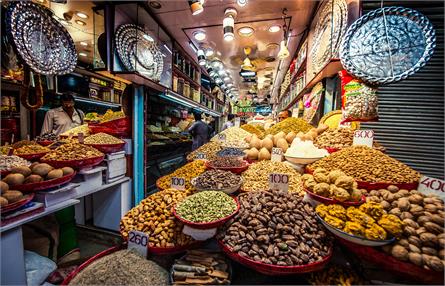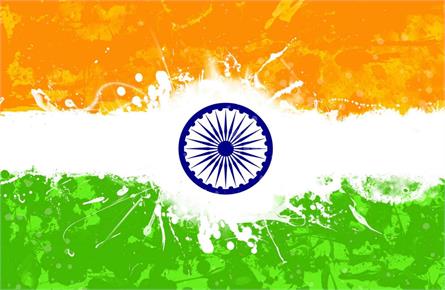The Red Fort: India’s Iconic Heritage Monument

The Red Fort, also known as Lal Qila, is a historic fort in the Old Delhi neighborhood of Delhi, India. It was once the primary residence of the Mughal emperors and was commissioned by Emperor Shah Jahan on May 12th, 1638, when he decided to move his capital from Agra to Delhi. The fort's design is credited to architect Ustad Ahmad Lahori, who also constructed the Taj Mahal. It features a combination of Persianate palace architecture and Indian traditions, representing the pinnacle of Mughal architecture during Shah Jahan's reign.
Unfortunately, the fort fell victim to plunder during Nader Shah's invasion of the Mughal Empire in 1739, resulting in the loss of its artwork and jewels. Following the Indian Rebellion of 1857, the British demolished most of the fort's marble structures, but the defensive walls remained intact, and the fortress was later used as a garrison.
On August 15th, 1947, the first prime minister of India, Jawaharlal Nehru, raised the Indian flag above the Lahori Gate. Every year on India's Independence Day (celebrated every 15th of August), the Indian tricolour flag is hoisted at the fort's main gate. Indian Army Signals' public address system broadcasts a speech by the prime minister of India from its ramparts.
Recognizing its historical and cultural significance, the Red Fort was designated a UNESCO World Heritage Site in 2007 as part of the Red Fort Complex.
Nomenclature of Red Fort
The Red Fort, known as Lal Qila in Hindi and Urdu, is named after its red sandstone walls. The word "Lal" is derived from the Hindustani language, meaning "red," while "Qila" comes from the Arabic word for "fortress." The fort was initially known as the "Blessed Fort" or Qila-e-Mubarak, as it was the royal family's residence. Interestingly, Agra Fort is also called Red Fort.
History of Red Fort
The history of Lal Qila is closely intertwined with the history of India itself. This magnificent fort has played a pivotal role in India's history, serving as a symbol of power, resilience, and cultural heritage. Here is a brief overview of the history of Lal Qila:
1. Construction by Shah Jahan (17th Century)
The construction of the Red Fort began in 1638 during the reign of the Mughal Emperor Shah Jahan. He decided to shift the Mughal capital from Agra to Delhi and commissioned the fort's construction to symbolize his power and grandeur.
The famous architect Ustad Ahmad Lahori designed the fort, and it took around a decade to complete. It was built using red sandstone, which gives it its distinctive reddish color.
2. Architectural Splendor
The Red Fort is an exemplary Mughal architecture piece showcasing a fusion of Persian, Timurid, and Indian architectural styles. It features intricate carvings, delicate inlay work, and decorative elements. The fort is a massive structure with high walls, bastions, and imposing gates, including the Lahori Gate, Delhi Gate, and Water Gate.
The fort complex has numerous palaces, audience halls, pavilions, gardens, and a stunning mosque known as the Moti Masjid.
3. Historical Significance
The Red Fort served as the main residence of the Mughal emperors for approximately 200 years, from its completion in 1648 until the British East India Company's control of Delhi in 1857.
It witnessed several significant historical events, including the Peacock Throne, the infamous Kohinoor Diamond, and the annual celebrations of the emperor's birthday, known as "Urs."
4. Decline and British Occupation
After the Indian Rebellion of 1857, the British took control of the Red Fort, marking the decline of Mughal rule in India. They used it for various administrative purposes. It was during this period that the Kohinoor Diamond was taken from the fort and later became part of the British Crown Jewels.
Terrorist Attack in the Year 2000
The 2000 terrorist attack on the Red Fort was a significant and tragic incident in the history of the iconic monument. On December 22, 2000, a group of militants carried out a terrorist attack on the Red Fort in Delhi, India. Here are the key details of the attack:
1. Attack Details
The attack took place in the evening when the Red Fort was illuminated and full of visitors.
A group of five armed militants stormed the Red Fort and opened fire indiscriminately on the security personnel and visitors.
The attackers managed to breach the security barriers and entered the fort's premises.
2. Casualties
The attack resulted in the deaths of three people, including two Army jawans (soldiers) and a civilian, and several others were injured.
The militants managed to escape the scene, leading to a manhunt by law enforcement agencies.
3. Responsibility
The responsibility for the attack was claimed by the terrorist organization Lashkar-e-Taiba (LeT), a Pakistan-based militant group.
4. Investigation and Arrests
In the aftermath of the attack, Indian security agencies launched a massive investigation to identify and capture the perpetrators.
Several individuals associated with the attack were arrested and brought to trial.
5. Impact
The attack on the Red Fort was a grim reminder of the security challenges India faced from terrorism. It highlighted the vulnerability of high-profile monuments and public places to terrorist acts.
Security
The Red Fort is a significant historical monument that requires strict security measures to protect its cultural heritage. The monument and other high-profile landmarks are subject to stringent measures to safeguard them against potential threats such as terrorism and vandalism.
Here are some of the critical aspects of the security measures in place at the Red Fort:
The Red Fort is surrounded by high walls and has various entry and exit points. At these points, visitors undergo thorough security checks, including metal detectors and x-ray scanners, to ensure that no prohibited items such as sharp objects, weapons, or potentially dangerous substances are brought into the premises. Additionally, the Delhi Police, along with specialized security forces, maintain a strong presence around the fort's perimeter to deter any unauthorized access.
Moreover, the Red Fort is equipped with an extensive network of closed-circuit television (CCTV) cameras to monitor all areas within the fort complex. These cameras are monitored by security personnel to detect and respond to any suspicious activities. A combination of armed police personnel, including paramilitary forces, are also stationed within and around the Red Fort, with their presence further increased during special events and occasions to ensure the safety of visitors and dignitaries.
To prevent damage or theft of historical artifacts and sensitive structures, certain areas within the Red Fort may have restricted access, with only authorized personnel allowed entry. Security agencies also have contingency plans in place to respond to emergencies such as terrorist threats or natural disasters, with regular drills and exercises conducted to ensure a coordinated response in case of any security breaches.
Indian intelligence agencies work closely with local law enforcement to gather and assess intelligence related to potential threats to the Red Fort and other important sites. Visitors are also educated about security protocols and guidelines to ensure their safety and that of others during their visit.
Various Structures In Red Fort
The Red Fort (Lal Qila) features various structures and architectural elements within its complex. These structures are a great proof to the grandeur and architectural excellence of the Mughal era. Here are some of the key structures within the Red Fort.
1. Lahori Gate
The Lahori Gate is the main entrance to the Red Fort, and it faces the city of Lahore, now in Pakistan. It is one of the most iconic gateways in the fort complex.
2. Delhi Gate
The Delhi Gate is another important entrance to the Red Fort, located on the southern side of the fort. It opens towards the city of Delhi.
3. Chatta Chowk
Chatta Chowk, also known as the Meena Bazaar, is a covered bazaar located between the Lahori Gate and the main courtyard. Historically, it was a bustling market where merchants sold various goods to the Mughal royalty.
4. Naubat Khana (Naqqar Khana)
The Naubat Khana, or Drum House, is situated at the entrance to the main courtyard. Musicians would play royal music here to announce the arrival of the emperor.
5. Diwan-i-Aam (Hall of Public Audience)
The Diwan-i-Aam is a majestic hall where the Mughal emperors held public audiences and received commoners and nobles. It features a grand throne platform, where the emperor would sit.
6. Diwan-i-Khas (Hall of Private Audience)
The Diwan-i-Khas is a smaller and more intricately decorated hall used for private meetings and discussions with special guests. It is famous for its exquisite white marble work and the iconic "Peacock Throne" that once adorned it.
7. Rang Mahal (Palace of Colors)
The Rang Mahal is believed to be the residence of the Mughal empresses. It is named for its once vibrant and colorful interiors, adorned with beautiful frescoes and decorative work.
8. Khas Mahal (Private Palace)
The Khas Mahal is a stunning palace consisting of three parts: the Arawali, the Mussaman Burj, and the Tosh Khana. It served as the private residence of the emperor.
9. Moti Masjid (Pearl Mosque)
The Moti Masjid is an elegant white marble mosque located within the Red Fort complex. It was built by Emperor Aurangzeb and is known for its simple yet graceful architecture.
10. Hammams (Royal Baths)
The Red Fort contains a set of hammams, or royal baths, where the emperors and their families would bathe. These baths were designed for comfort and luxury.
11. Hayat Bakhsh Bagh (Life-Bestowing Garden)
This garden area is beautifully landscaped and features fountains and water channels. It was a place of relaxation and enjoyment for the Mughal emperors.
12. Sawan and Bhadon Pavilions
These twin pavilions, named after the monsoon months, overlook the Hayat Bakhsh Bagh and provide a panoramic view of the garden and the fort.














